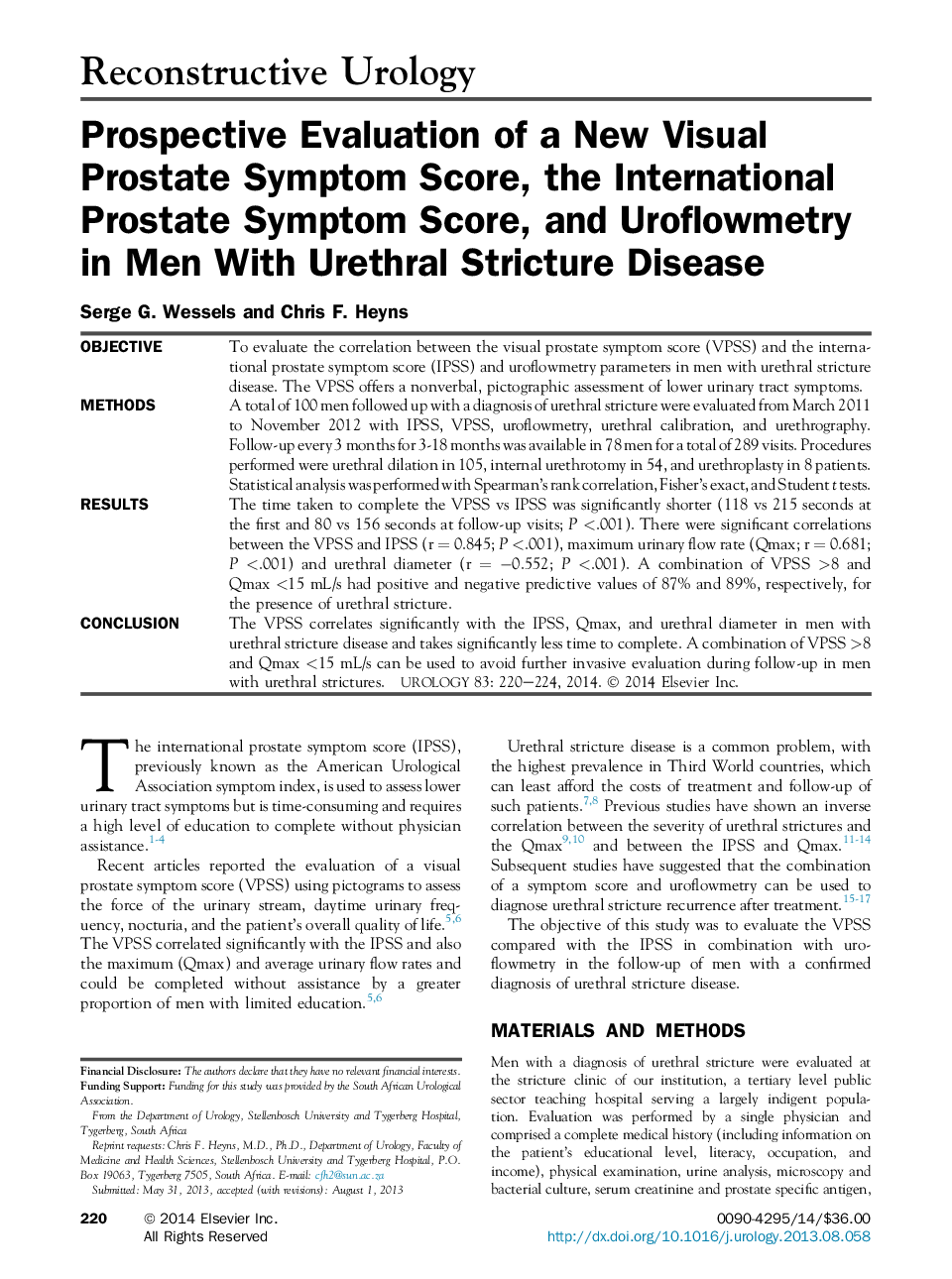| Article ID | Journal | Published Year | Pages | File Type |
|---|---|---|---|---|
| 3898923 | Urology | 2014 | 5 Pages |
ObjectiveTo evaluate the correlation between the visual prostate symptom score (VPSS) and the international prostate symptom score (IPSS) and uroflowmetry parameters in men with urethral stricture disease. The VPSS offers a nonverbal, pictographic assessment of lower urinary tract symptoms.MethodsA total of 100 men followed up with a diagnosis of urethral stricture were evaluated from March 2011 to November 2012 with IPSS, VPSS, uroflowmetry, urethral calibration, and urethrography. Follow-up every 3 months for 3-18 months was available in 78 men for a total of 289 visits. Procedures performed were urethral dilation in 105, internal urethrotomy in 54, and urethroplasty in 8 patients. Statistical analysis was performed with Spearman's rank correlation, Fisher's exact, and Student t tests.ResultsThe time taken to complete the VPSS vs IPSS was significantly shorter (118 vs 215 seconds at the first and 80 vs 156 seconds at follow-up visits; P <.001). There were significant correlations between the VPSS and IPSS (r = 0.845; P <.001), maximum urinary flow rate (Qmax; r = 0.681; P <.001) and urethral diameter (r = −0.552; P <.001). A combination of VPSS >8 and Qmax <15 mL/s had positive and negative predictive values of 87% and 89%, respectively, for the presence of urethral stricture.ConclusionThe VPSS correlates significantly with the IPSS, Qmax, and urethral diameter in men with urethral stricture disease and takes significantly less time to complete. A combination of VPSS >8 and Qmax <15 mL/s can be used to avoid further invasive evaluation during follow-up in men with urethral strictures.
